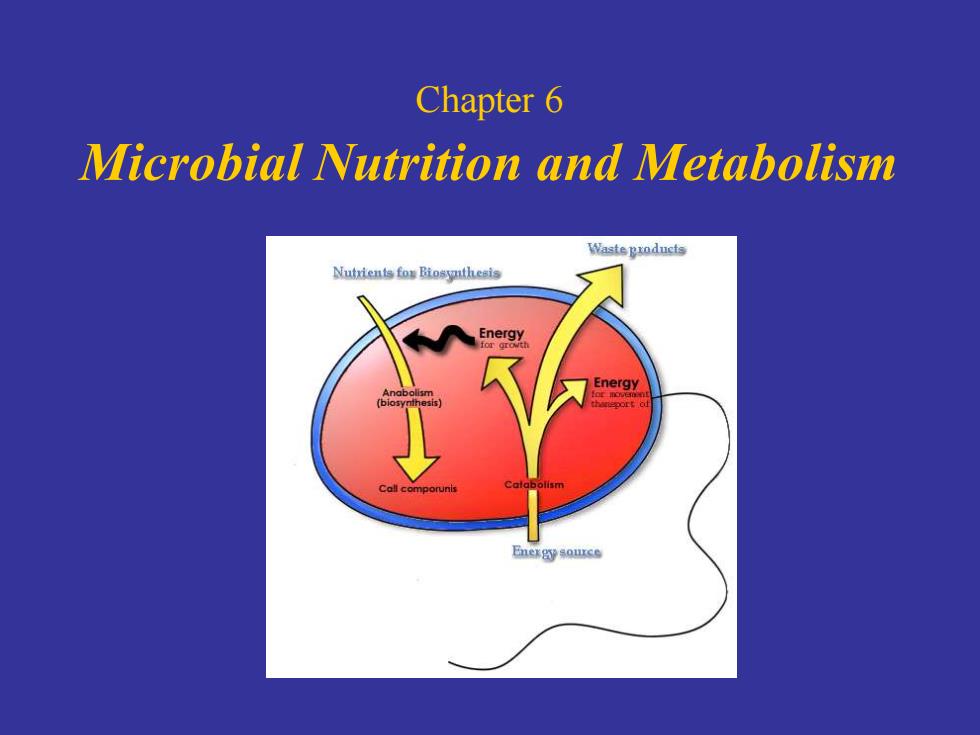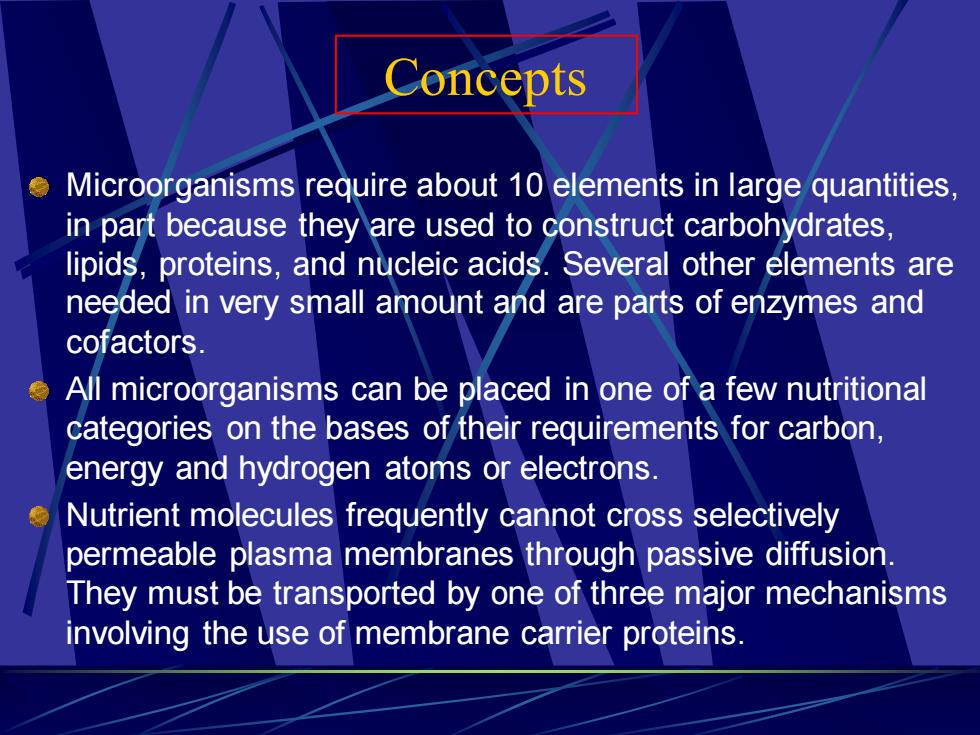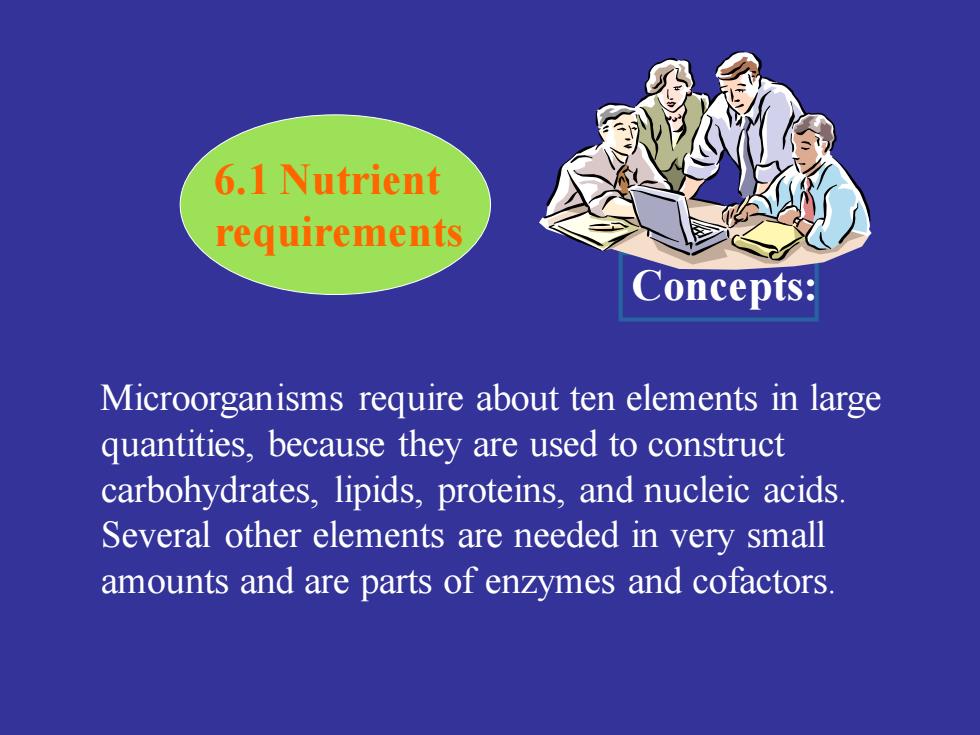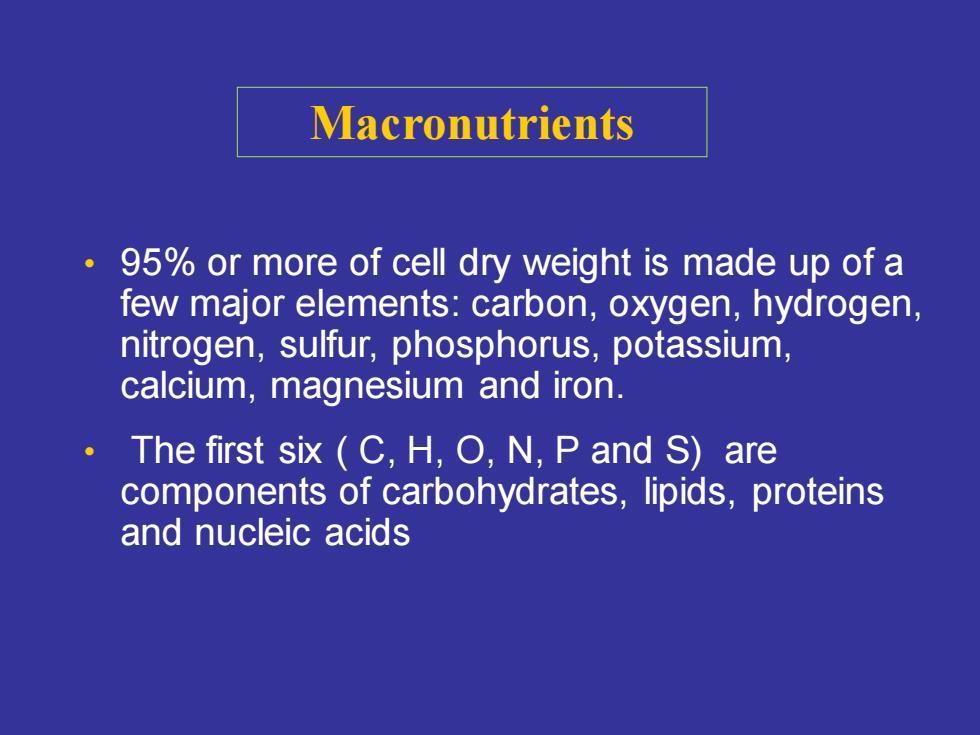
Chapter 6 Microbial Nutrition and Metabolism Waste products Nutrients for Biosynthesis Energy Enexg时auce
Chapter 6 Microbial Nutrition and Metabolism

Chapter outline 6.1 Nutrient requirements 6.2 Nutritional types of microorganisms 6.3 Uptake of nutrients by the cell 6.3 Culture Media 6.4 An Overview of Metabolism 6.5 Fermentation:The Embden-Meyerhof Pathway 6.6 Respiration and Electron Transport 6.7 The Balance Sheet of Aerobic Respiration and Energy Storage 6.8 An Overview of Alternate Modes of Energy Generation 6.9 Biosynthesis of Monomers 6.10 Nitrogen fixation
6.1 Nutrient requirements 6.2 Nutritional types of microorganisms 6.3 Uptake of nutrients by the cell 6.3 Culture Media 6.4 An Overview of Metabolism 6.5 Fermentation: The Embden-Meyerhof Pathway 6.6 Respiration and Electron Transport 6.7 The Balance Sheet of Aerobic Respiration and Energy Storage 6.8 An Overview of Alternate Modes of Energy Generation 6.9 Biosynthesis of Monomers 6.10 Nitrogen fixation Chapter outline

Concepts ● Microorganisms require about 10 elements in large quantities, in part because they are used to construct carbohydrates, lipids,proteins,and nucleic acids.Several other elements are needed in very small amount and are parts of enzymes and cofactors. All microorganisms can be placed in one of a few nutritional categories on the bases of their requirements for carbon, energy and hydrogen atoms or electrons. Nutrient molecules frequently cannot cross selectively permeable plasma membranes through passive diffusion. They must be transported by one of three major mechanisms involving the use of membrane carrier proteins
Concepts Microorganisms require about 10 elements in large quantities, in part because they are used to construct carbohydrates, lipids, proteins, and nucleic acids. Several other elements are needed in very small amount and are parts of enzymes and cofactors. All microorganisms can be placed in one of a few nutritional categories on the bases of their requirements for carbon, energy and hydrogen atoms or electrons. Nutrient molecules frequently cannot cross selectively permeable plasma membranes through passive diffusion. They must be transported by one of three major mechanisms involving the use of membrane carrier proteins

6.1 Nutrient requirements concepts: Microorganisms require about ten elements in large quantities,because they are used to construct carbohydrates,lipids,proteins,and nucleic acids Several other elements are needed in very small amounts and are parts of enzymes and cofactors
Microorganisms require about ten elements in large quantities, because they are used to construct carbohydrates, lipids, proteins, and nucleic acids. Several other elements are needed in very small amounts and are parts of enzymes and cofactors. Concepts: 6.1 Nutrient requirements

Macronutrients 95%or more of cell dry weight is made up of a few major elements:carbon,oxygen,hydrogen, nitrogen,sulfur,phosphorus,potassium, calcium,magnesium and iron. The first six C,H,O,N,P and S)are components of carbohydrates,lipids,proteins and nucleic acids
Macronutrients • 95% or more of cell dry weight is made up of a few major elements: carbon, oxygen, hydrogen, nitrogen, sulfur, phosphorus, potassium, calcium, magnesium and iron. • The first six ( C, H, O, N, P and S) are components of carbohydrates, lipids, proteins and nucleic acids